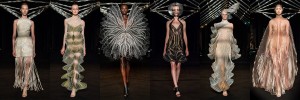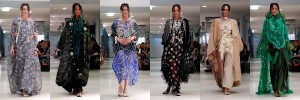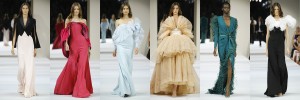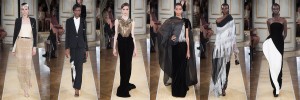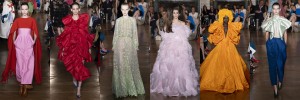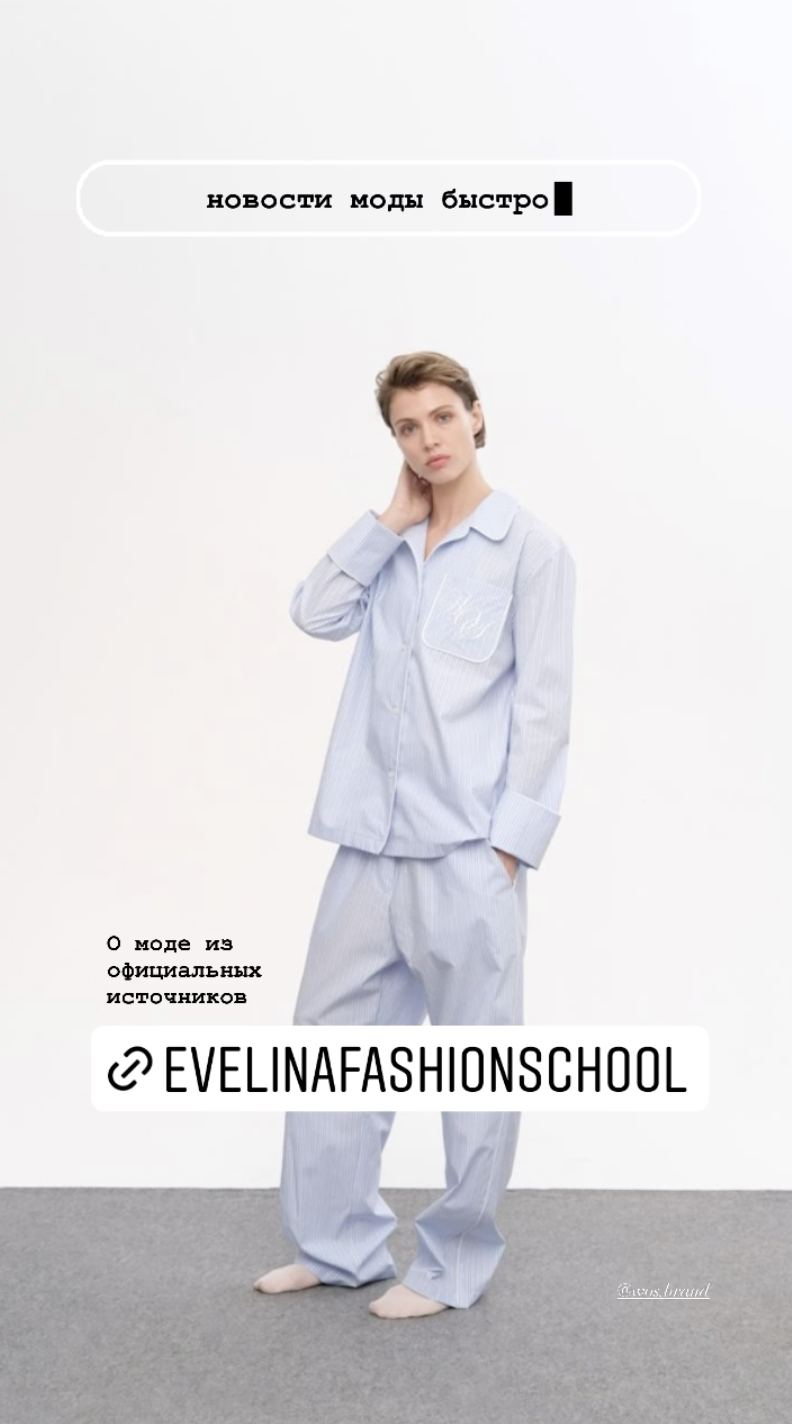Diary
The Paris Haute Couture Week celebrates 150th anniversary this season.
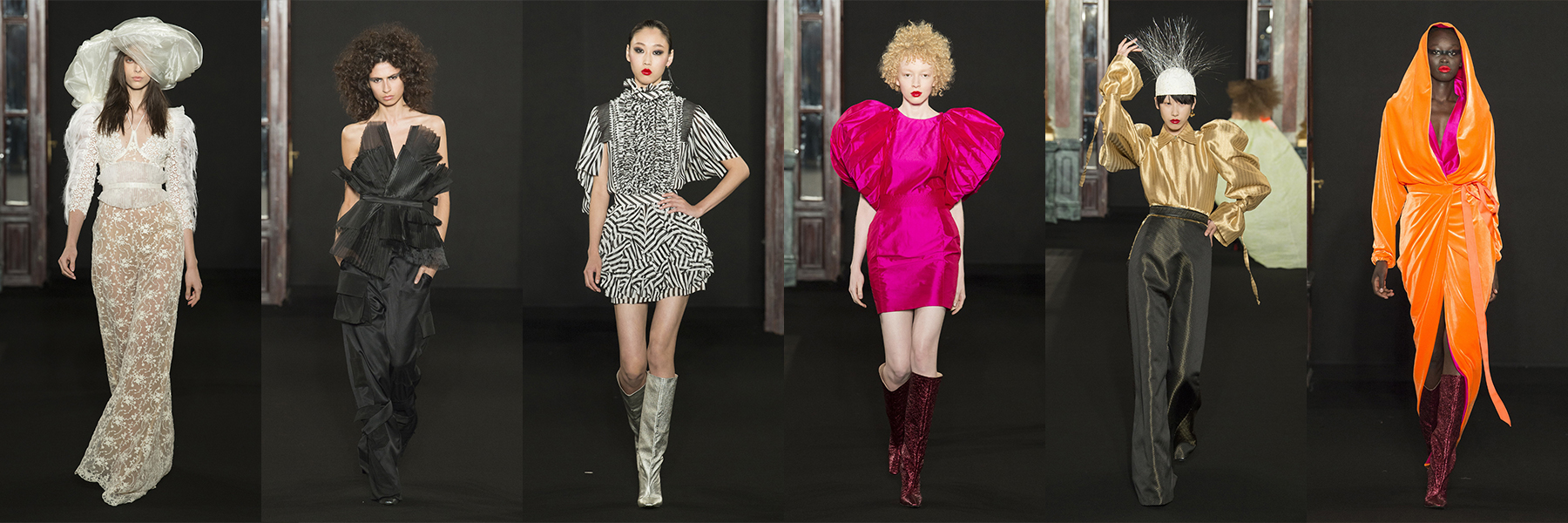
Ronald van der Kemp Couture, Fall–Winter 2018/2019

Are you going to marry but not sure about the dress? The designer Giambattista Valli is happy to help you!
Giambattista Valli Haute Couture, Fall–Winter 2018/2019.

Chanel proves again that a grey colour is the most Parisian one.
Chanel Haute Couture, Fall–Winter 2018/2019.

Ulyana Sergeenko arranged her show at the Russian embassy in Paris. A stunning hall with an impressive interior in the style of midcentury – the USSR from the best side, as viewed by the Europeans. The collection is solid, with a great offer of elegant outfits for a secular life of varying degrees of solemnity. New look silhouettes could not have come at a better time.
Ulyana Sergeenko Haute Couture, Fall–Winter 2018/2019.
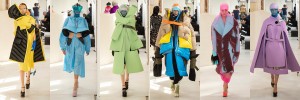
John Galliano’s avant-garde vision for Maison Margiela.
Maison Margiela Couture, Fall–Winter 2018/2019.

Jean Paul Gaultier has made a vast research on different styles of the smoking.
Jean Paul Gaultier, Fall–Winter 2018/2019.

In honor of the 25th anniversary of the Fashion House, Viktor & Rolf recreated 25 iconic models from their collections of different years in white colour. Funny fact: for 25 years not everyone remembered the way name “Viktor” is written in this case, some managed to make a mistake, even congratulating designers on their anniversary.
Viktor&Rolf Haute Couture, Fall–Winter 2018/2019.

The guests of Soirée des Collections de Haute Couture (from left to right): model Anna Cleveland; designer Jean Charles De Castelbajac with girl-friend Pauline De Drouas; designer of Yazbukey Yasmin Kurhan; fashion critic Suzy Menkes; creative director of Dior Maria Grazia Chiuri with her daughter Rachele Regin; stylist Elina Halimi, fashion expert Evelina Khromtchenko, designer Milena Sclacmeuld
The Paris Haute Couture Week is held twice a year, but this season is special: Haute Couture celebrates 150th anniversary.
The Paris Haute Couture stably shows designers from around the world who work under the logo of Chambre Syndicale de la Couture Parisienne. In order to call yourself a couturier, you must have the right to do it and to be a member or a corresponding member or an invited member of the Chambre Syndicale de la Couture Parisienne, an organization which it is difficult to get in to, because you need to survive the vote of all the members of this organization. In fact, it is a trade union of all those Fashion Houses working in sphere of haute couture, and it is a legally protected concept that cannot be used simply for the sake of a witty remark.
If you are told that someone is a couturier, you need to check the documents. The Couture House is to have a studio, which employs a sufficient number of people. In different years the number of these people varied, on average 50-30 people, depending on the status of the Fashion House. Of course, in order to have the luxury of keeping staff members with such an expensive qualification, you need to be a successful Haute Couture House. Therefore, only a few Fashion Houses have the opportunity to opportunity to remain in the haute couture framework. However, it does not mean that high fashion is dying, it is not.
“High Fashion” is a legally registered and protected concept which defines what the Parisian fashion is: archives, the cutting system, the choice of the fabric, hand-embroidery, hand work in the field of joining fabrics and materials, the purity of the work – the standard of the high sewing art in the world. The purest and the most French.
The concept of Haute Couture can live only in France, because in every country of the world there are their own laws of high sewing. Even if the designer of the Fashion House is an Italian, English, American or Russian, the studio – that is those people whose work is protected through the efforts of the Chambre Syndicale de la Couture Parisienne, must be a company registered in France. It’s government‘s intermediating care of job and people who are passing through the centuries the skills in the field of embroidery, cutting, millinery, shoemaking and accessories.
High fashion will never die, it is due to the French perception of “self” and national character, for whom the package means not less than the content. The way people show the details is sometimes perceived much more important than the way people demonstrate the main thing. It’s the country of hints, nuances and shades. The country where it is clear that God is in the details and so is the devil, by the way. This is France, gentlemen! So let’s not say that high fashion is dying. This is the talk for those whose competence is disputable.




